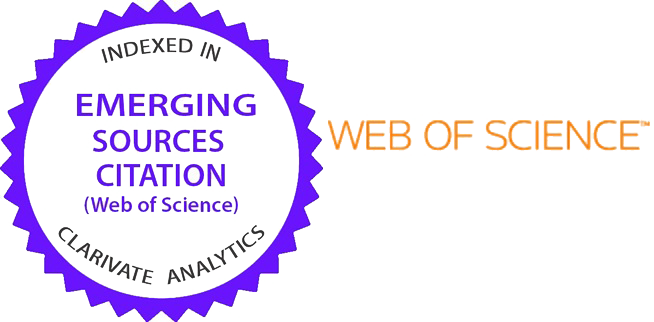Cloud Computing-Based Security Analysis on Wireless Sensor Nodes Cluster Using Predictive Technique
DOI:
https://doi.org/10.31436/iiumej.v26i2.3393Keywords:
Wireless Sensor Networks, Cloud, Security, Deep Learning, Predictive TechniqueAbstract
Rapid technological advancements have led to the widespread deployment of wireless sensor networks (WSNs) in industrial environments, making cybersecurity a critical concern in cloud computing. This paper presents a predictive framework for cloud-based intrusion detection and prevention for WSNs. It integrates machine learning models—Multilayer Perceptron (MLP), Decision Tree, and Autoencoder—to precisely classify and mitigate various impacts of cyber intrusions on a cluster of wireless sensors. An intelligent prioritization and prevention system is also proposed, categorizing attacks—blackhole, grayhole, flooding, and scheduling—based on their impact on industrial processes. Experimental results indicate robust detection capabilities, with the Decision Tree achieving 99.48% accuracy, slightly outperforming MLP at 99.37%. The Autoencoder demonstrated superior binary classification, distinguishing between normal and anomalous instances with high precision and recall rates. This framework leverages the WSN-DS dataset to simulate and validate its efficiency in mitigating real-time threats. Future work will focus on refining the prioritization model and integrating advanced machine learning techniques for enhanced adaptability and resilience.
ABSTRAK: Kemajuan pesat dalam teknologi telah membawa kepada penggunaan meluas rangkaian penderia wayarles (WSN) dalam persekitaran industri, menjadikan keselamatan siber sebagai kebimbangan kritikal dalam pengkomputeran awan. Kajian ini membentangkan rangka kerja ramalan bagi mengesan dan mencegah pencerobohan berasaskan awan untuk WSN. Ia menyepadukan model pembelajaran mesin—Perseptron Berbilang Lapis (MLP), Pokok Keputusan (Decision Tree) dan Enkoder Automatik (Autoencoder)—bagi klasifikasi tepat dan pengurangan pelbagai kesan pencerobohan siber pada kelompok penderia wayarles. Sistem keutamaan dan pencegahan pintar turut dicadangkan, mengkategorikan serangan—lubang hitam, lubang kelabu, banjir dan penjadualan—berdasarkan kesan terhadap proses industri. Dapatan eksperimen menunjukkan keupayaan pengesanan yang mantap dengan Decision Tree mencapai ketepatan 99.48%, sedikit mengatasi prestasi MLP pada 99.37%. Autoencoder menunjukkan klasifikasi binari yang unggul, membezakan antara kejadian biasa dan anomali dengan ketepatan tinggi dan kadar ingatan semula. Rangka kerja ini memanfaatkan set data WSN-DS bagi simulasi dan pengesahan kecekapan dalam mengurangkan ancaman masa nyata. Kajian akan menumpukan pada memperhalusi model keutamaan dan menyepadukan teknik pembelajaran mesin lanjutan pada masa hadapan bagi kebolehsuaian dan daya tahan yang tinggi.
Downloads
Metrics
References
Dash, Sanjit Kumar, Subasish Mohapatra, and Prasant Kumar Pattnaik. "A survey on applications of wireless sensor network using cloud computing." International Journal of Computer Science & Emerging Technologies 1, no. 4 (2010): 50-55.
John, Ayuba, Ismail Fauzi Bin Isnin, Syed Hamid Hussain Madni, and Muhammed Faheem. "Cluster-based wireless sensor network framework for denial-of-service attack detection based on variable selection ensemble machine learning algorithms." Intelligent Systems with Applications 22 (2024): 200381.
Sareen, Sanjay, Sandeep K. Sood, and Sunil Kumar Gupta. "An automatic prediction of epileptic seizures using cloud computing and wireless sensor networks." Journal of medical systems 40 (2016): 1-18.
Mohammed, Ahmed. "The Web Technology and Cloud Computing Security based Machine Learning Algorithms for Detect DDOS Attacks." Journal of Information Technology and Informatics 3, no. 1 (2024).
Gayathri, S., and D. Surendran. "Unified ensemble federated learning with cloud computing for online anomaly detection in energy-efficient wireless sensor networks." Journal of Cloud Computing 13, no. 1 (2024): 49.
Luo, Haonan, Jing Wang, Deyu Lin, Linghe Kong, Yufei Zhao, and Yong Liang Guan. "A Novel Energy-Efficient Approach Based on Clustering Using Grey Prediction in WSNs for IoT Infrastructures." IEEE Internet of Things Journal (2024).
Yadav, Santosh Kumar, and Rakesh Kumar. "Scalable energy optimization of resources for mobile cloud computing using sensor enabled cluster-based system." Wireless Networks (2024): 1-26.
Chellathurai Amirthabai, Subasini, Udita Malhotra, Saravanan Thapasimuthu Rajeswari, and Sudhahar Thachankurichy Natesan. "Healthcare security in cloud?based wireless sensor networks: Botnet attack detection via autoencoder?aided goal?based artificial intelligent agent." Concurrency and Computation: Practice and Experience: e8152.
Alawi, Mahmoud A., Rashid A. Saeed, and Aisha A. Hassan. "Cluster-based multi-hop vehicular communication with multi-metric optimization." In 2012 international conference on computer and communication engineering (ICCCE), pp. 22-27. IEEE, 2012.
Islam, Shayla, Aisha-Hassan Abdalla Hashim, Mohamed Hadi Habaebi, and Mohammad Kamrul Hasan. "Design and implementation of a multihoming-based scheme to support mobility management in NEMO." Wireless Personal Communications 95 (2017): 457-473.
Hassan, Mona Bakri, Rashid A. Saeed, Othman Khalifa, Elmustafa Sayed Ali, Rania A. Mokhtar, and Aisha A. Hashim. "Green machine learning for green cloud energy efficiency." In 2022 IEEE 2nd International Maghreb Meeting of the Conference on Sciences and Techniques of Automatic Control and Computer Engineering (MI-STA), pp. 288-294. IEEE, 2022.
Badawi, Ahmed SA, Nurul Fadzlin Hasbullaha, Y. Yusoff, Sheroz Khan, Aisha Hashim, Alhareth Zyoud, and Mohammed Elamassie. "Evaluation of wind power for electrical energy generation in the mediterranean coast of Palestine for 14 years." International Journal of Electrical and Computer Engineering (2019).
Elagib, Sara B., Atahur Rahman Najeeb, Aisha H. Hashim, and Rashidah F. Olanrewaju. "Big data analysis solutions using MapReduce framework." In 2014 International Conference on Computer and Communication Engineering, pp. 127-130. IEEE, 2014.
Khalifa, Othman O., Adil Roubleh, Abdelrahim Esgiar, Maha Abdelhaq, Raed Alsaqour, Aisha Abdalla, Elmustafa Sayed Ali, and Rashid Saeed. "An IoT-platform-based deep learning system for human behavior recognition in smart city monitoring using the Berkeley MHAD datasets." Systems 10, no. 5 (2022): 177.
Hashim, M. M., Mustafa Sabah Taha, Azana Hafizah Mohd Aman, Aisha Hassan Abdalla Hashim, Mohd Shafry Mohd Rahim, and Shayla Islam. "Securing medical data transmission systems based on integrating algorithm of encryption and steganography." In 2019 7th International Conference on Mechatronics Engineering (ICOM), pp. 1-6. IEEE, 2019.
Downloads
Published
How to Cite
Issue
Section
License
Copyright (c) 2025 IIUM Press

This work is licensed under a Creative Commons Attribution-NonCommercial 4.0 International License.






















